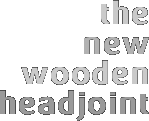


 
|
|
Design story
Mindful of the contemporary spirit of the age, we have developed strongly concerning the sound image of the flute; whereas in former times the emphasis was on volume and power, it now finds its accent being laid more and more on the search towards a wider and more colourful pallet: the advance of the wooden flute is a clear example of this.

This trend is still developing further during the 21st century musical-historical thinking, wherein one chooses for the authenticity of the instrument in every musical period.
In an ideal situation, the performer would have an historical instrument or at least a copy of it to accompany its musical period, which unfortunately is financially unrealistic.
To replace the headpiece, which is the soul of the instrument, could, however, provide the opportunity of approaching these specific sound patterns closer.
Development
Most wooden headpieces available today have a relatively thin wall with an elevated lip plate: however, the sound resonance and the sound image are strongly comparable with those of a metal head. That is why I opted to use a thicker wall, in which the different building parameters are worked into the wood structure instead of being put on top of it. That way the wood thickness, that is necessary to obtain a more ‘wooden’ sound, is not or barely influenced.

Developing a contemporary design of a wooden headpiece in combination with the metal corpus is a challenge, from both an aesthetical and technical point of view, which is why I have called upon the professional help of product designer Maarten Bernaerts.
His perspective: “A contemporary design with respect for an age-old tradition.”
“Creating a new wooden headpiece is a task that can not exactly be called a present being a designer: it is fiddling with developments which have withstood the ravages of time, to eventually reach a new entity with an important, new added value. Naturally the sound is and will always be the essence of the design, all the rest is inferior. It is a school example for form follows function idea, a 20th century thought that has inspired almost every designer of the previous century.”

Development process of the concept
Maarten has therefore let himself be inspired by history on the one hand and a more timeless given, namely organic forms in nature, on the other hand.
The stereotypical form of a traditional metal headpiece can be considered a valuable heritage of the industrial revolution, where rococo as formal element fitted nicely in the rising romantic spirit of the age of the 19th century. Since then only little has changed concerning formal features, except for some minimal and hardly visible structural adaptations that would primarily influence the sound. The romantic and nature-inspired (rococo) shape has survived many dominant style periods in history, like the Art Nouveau, Art Deco and modern architecture.
The result
A new, contemporary and innovative design. Not a powerful machine that has been ornamented romantically, but a whole well thought through and organically inspired, developed in an elegant way with modern design techniques.
|
|
|

